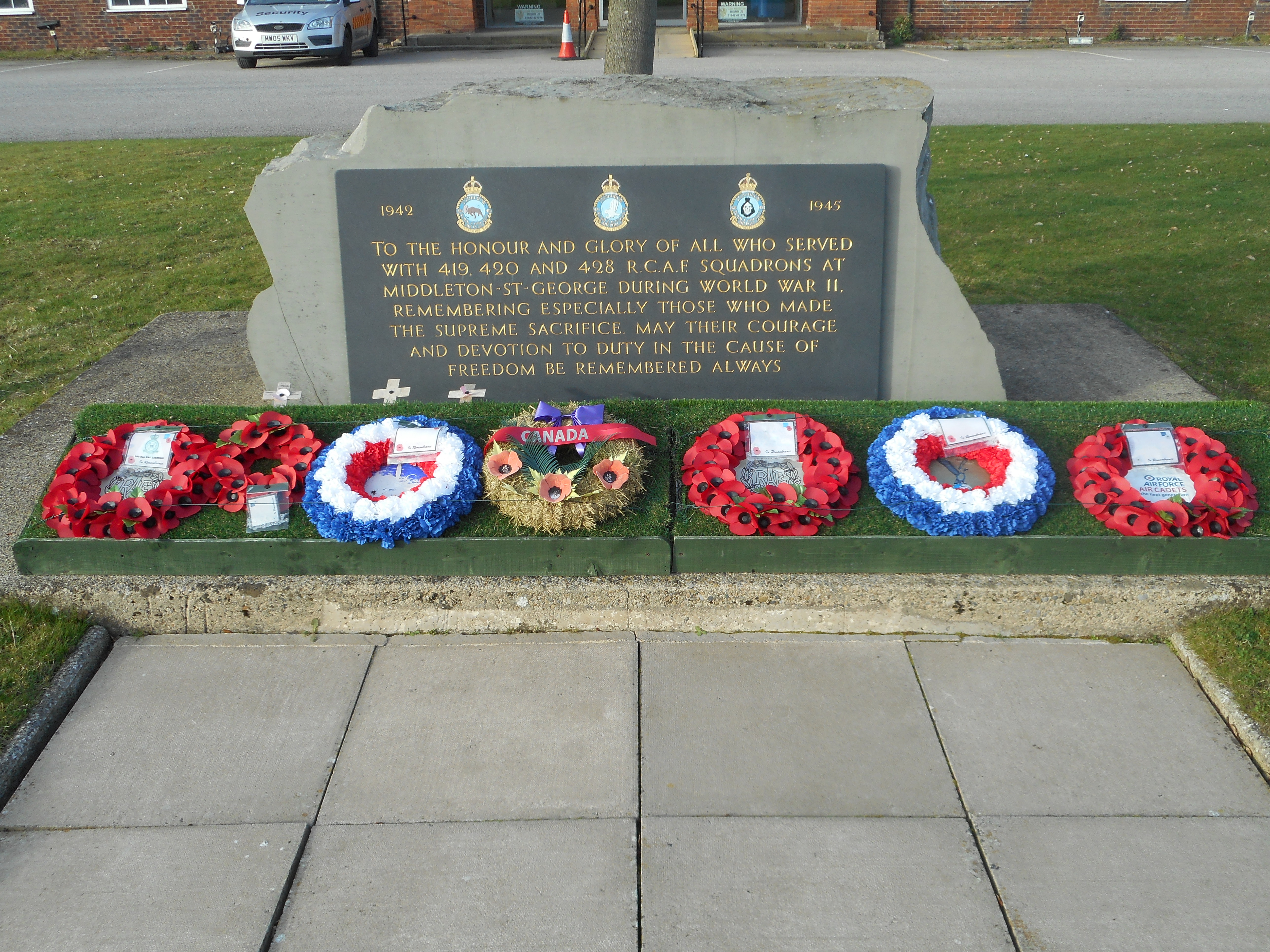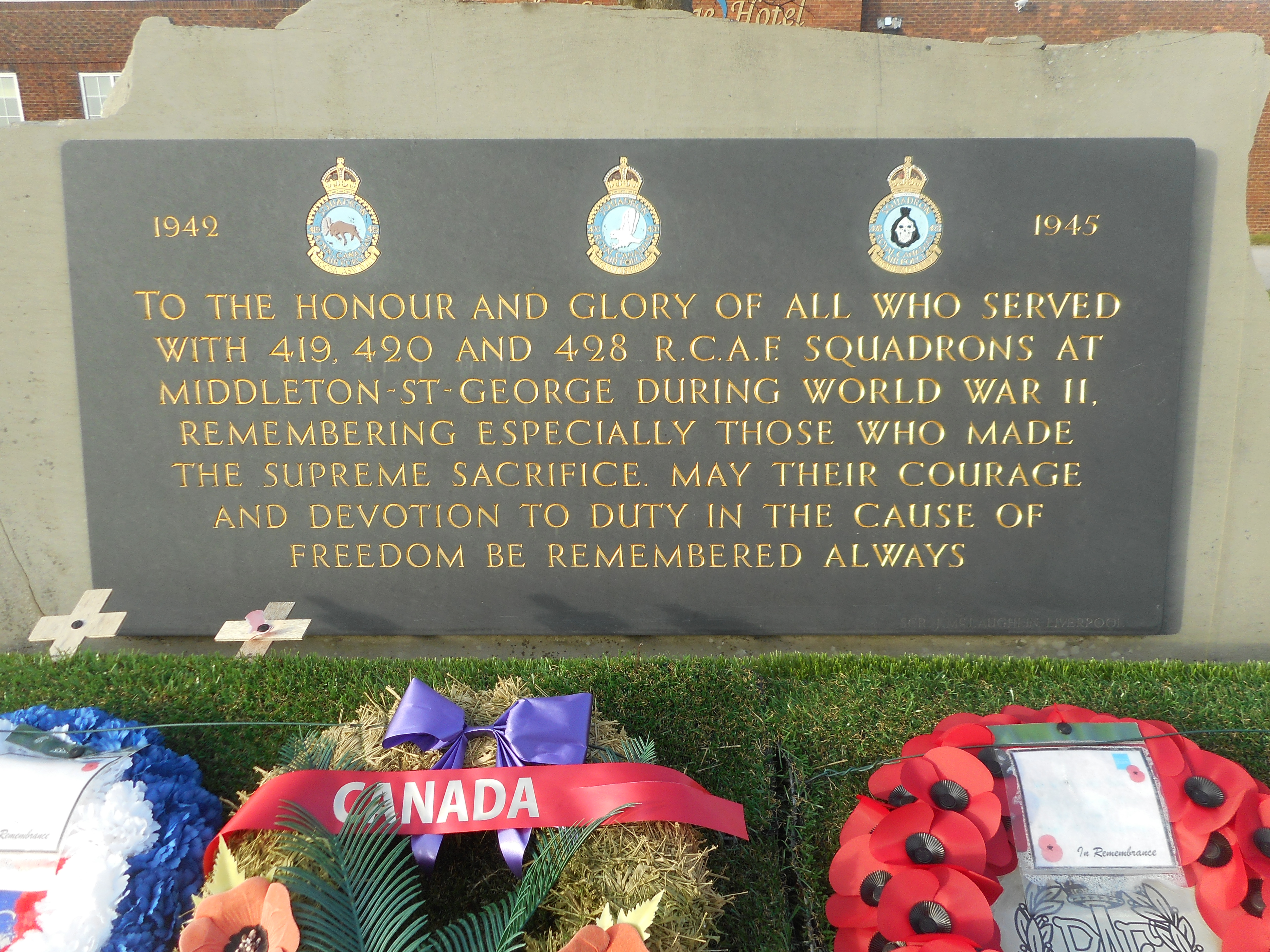Bartlemay, William Arthur
Personal Information
| Rank | P/O |
| Forename(s) | William Arthur |
| Surname | Bartlemay |
| Gender | M |
| Age | 18 |
| Date of Death | 25-10-1944 |
| Next of Kin | Son of Charles E. Bartlemay, and of Myra Glenn Bartlemay, of Buffalo, New York State, U.S.A. |
Aircraft Information
| Aircraft | Avro Lancaster X |
| Serial Number | KB737 |
| Markings | NA-R |
Memorial Information
| Burial/Memorial Country | Germany |
| Burial/Memorial Place | Reichswald Forest War Cemetery |
| Grave Reference | Coll. grave 14. E. 15-18. |
| Epitaph | FOR LOVE OF FELLOW MAN |
IBCC Memorial Information
| Phase | 2 |
| Panel Number | 127 |
Enlistment Information
| Service Number | J/95199 |
| Service | Royal Canadian Air Force |
| Group | 6 |
| Squadron | 428 (Ghost) |
| Squadron Motto | Usque ad finem (To the very end) |
| Trade | Wireless Operator |
| Country of Origin | United States of America |
Other Memorials
| Location | Adjacent to fomer St. Georges Hotel, Teesside Airport, County Durham |
| Country | United Kingdom |
| Memorial Type | Memorial Stone with inscribed slate tablets |
| Memorial Text | Dedicated to all who served on 428 (RCAF) Sqn at Middleton St. George during WWII, especially those who made the supreme sacrifice |
Miscellaneous Information
| William was born 30 October 1925, and enlisted at 16 years old in Hamilton, Ontario, on 16 December 1941, using his brother's name and birth certificate - Irvin Victor Bartlemay, born 25 July, 1923. |
Commonwealth War Graves Commission
The National Archives
| Record of Events (Operational Record Book) AIR 27/1850/20 |
| Summary of Events (Operational Record Book) AIR 27/1850/19 |
Fellow Servicemen
Please note that this list gives all the losses aboard the quoted aircraft and occasionally these may have occurred on an earlier date when the aircraft was not itself lost. Please check the dates of death carefully.
Last Operation Information
| Start Date | 25-10-1944 |
| End Date | 25-10-1944 |
| Takeoff Station | Middleton St. George |
| Day/Night Raid | Day |
| Operation | Essen. 771 aircraft, 4 losses (0.5%). Cloud cover dictated the use of sky-marking. The bombing was considered by Bomber Command to be scattered yet the local report states that more damage occurred during this raid than the one 36 hours previous. 1163 buildings were destroyed and 820 people were killed. Aerial reconnaissance after this pair of raids showed much damage to those industrial buildings that had been undamaged so far, including the Krupps steelworks. The pig-iron plant ceased production completely. Essen was now, to the main extent, spent and lost its role as the most important industrialised centre in Germany |



